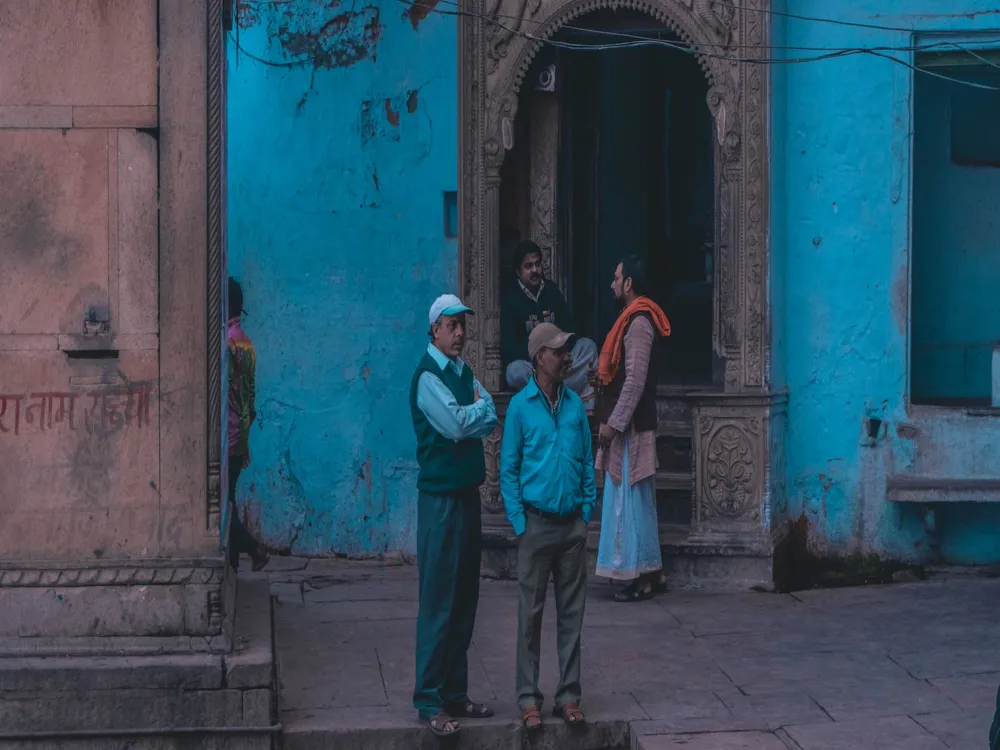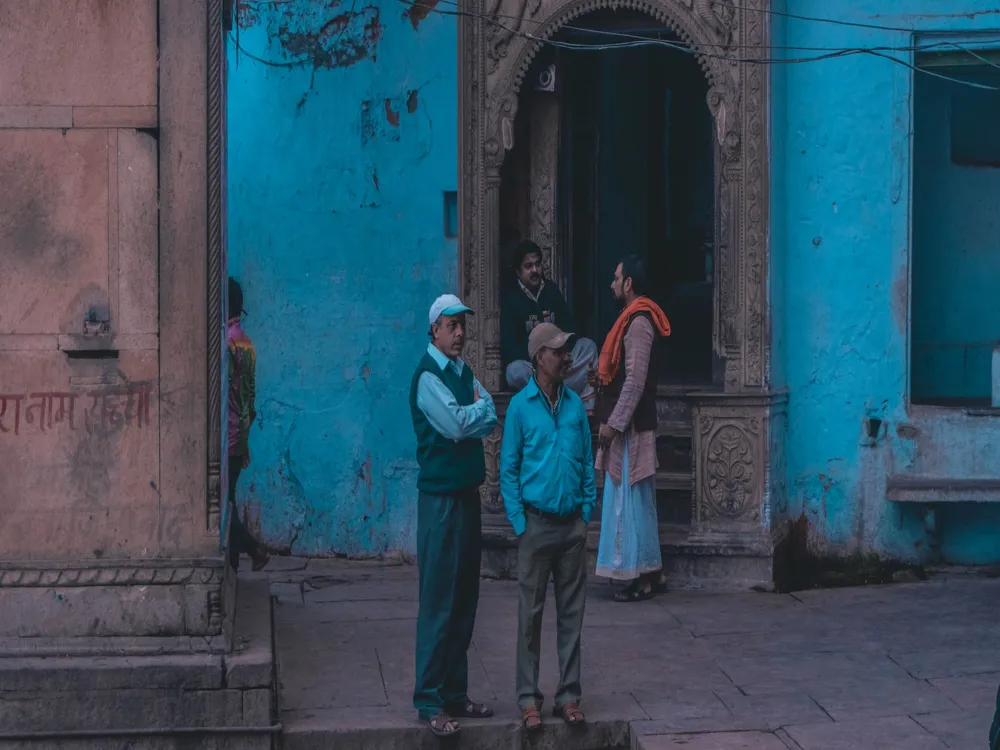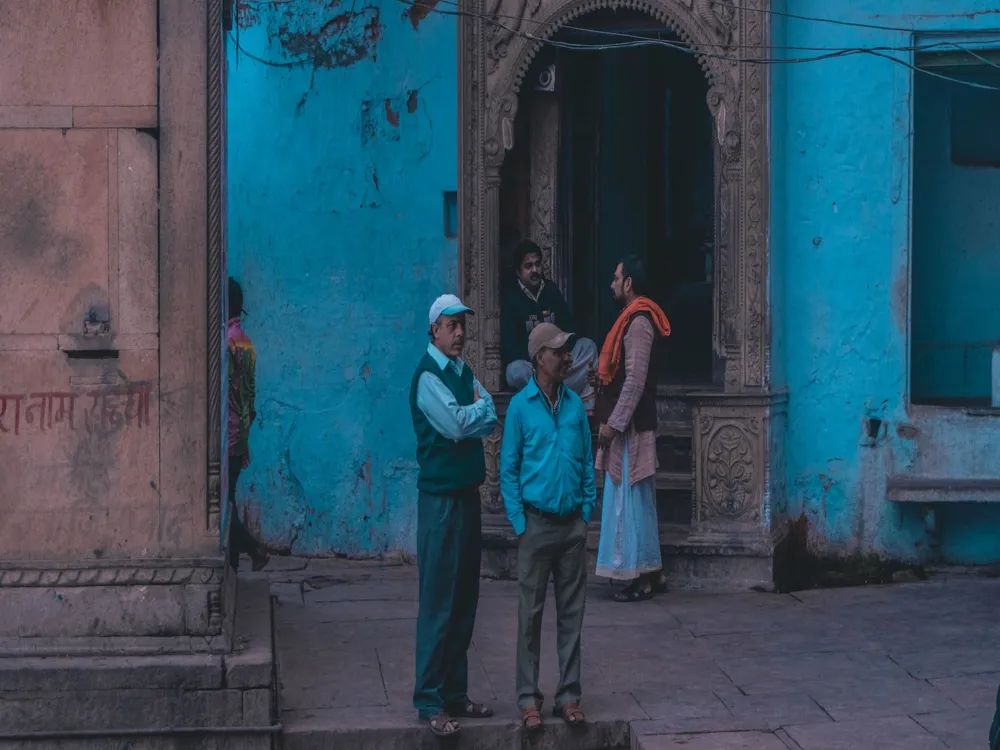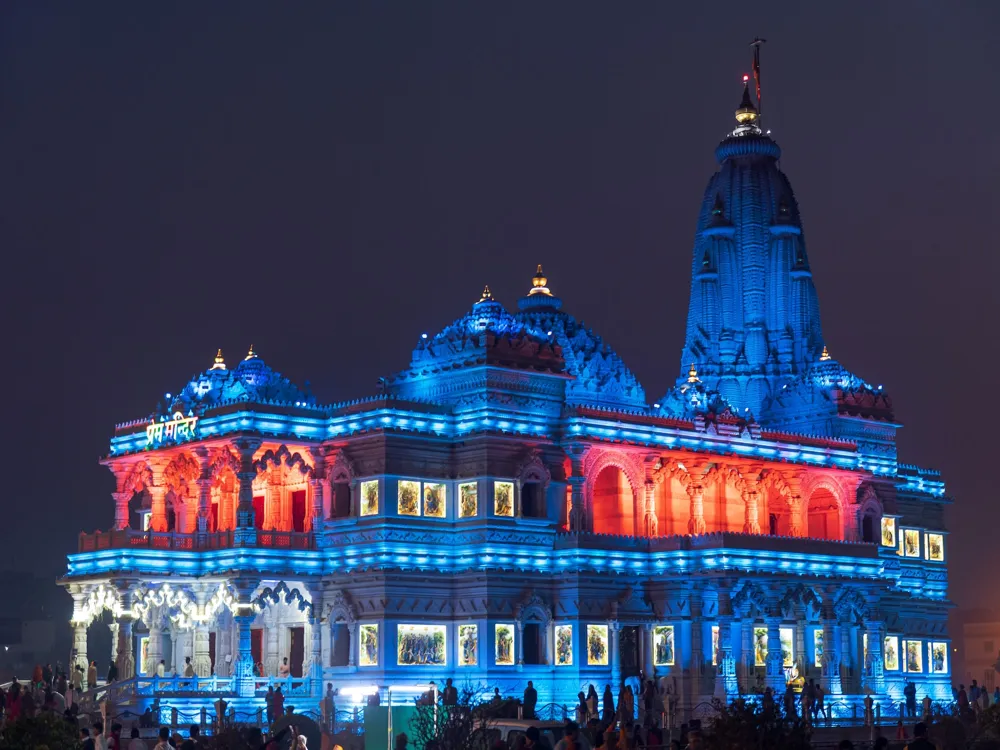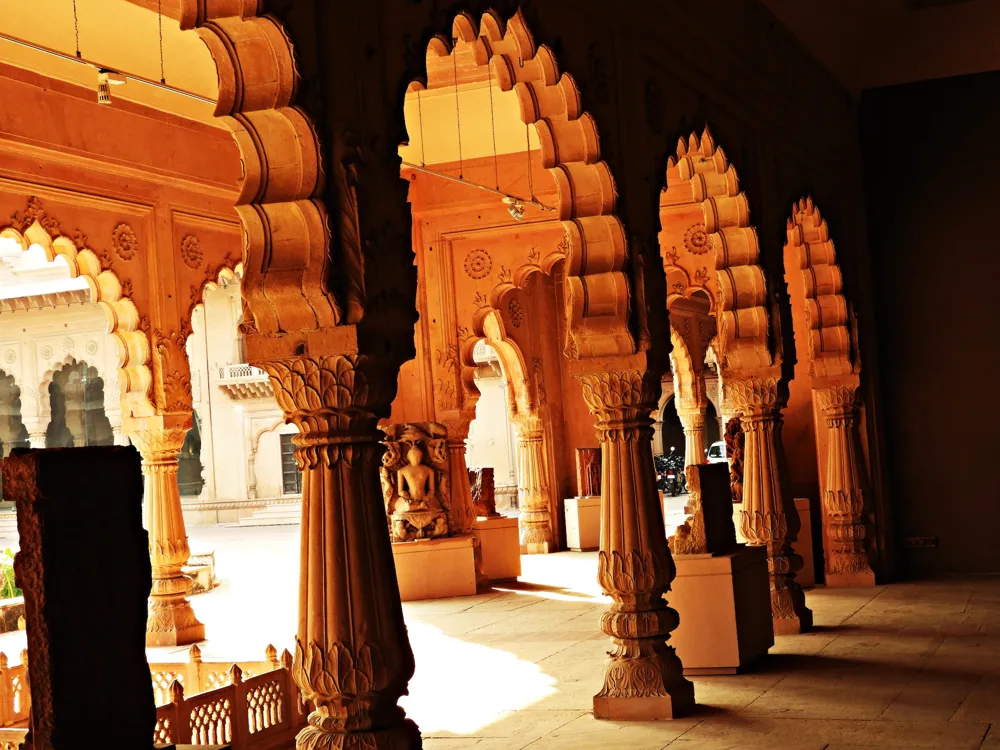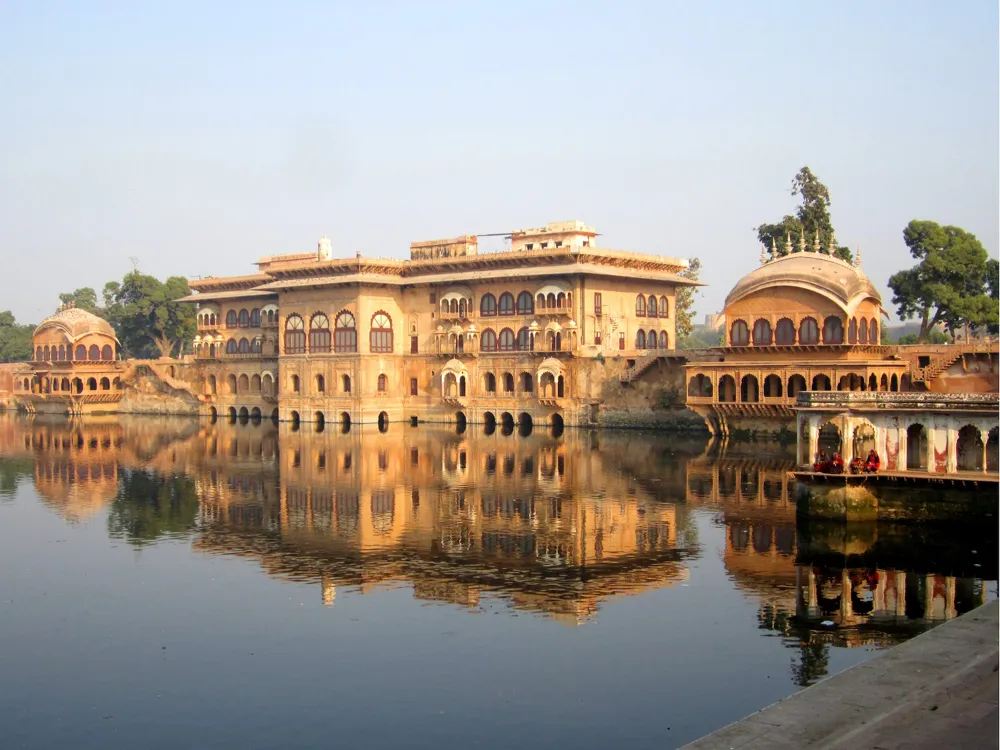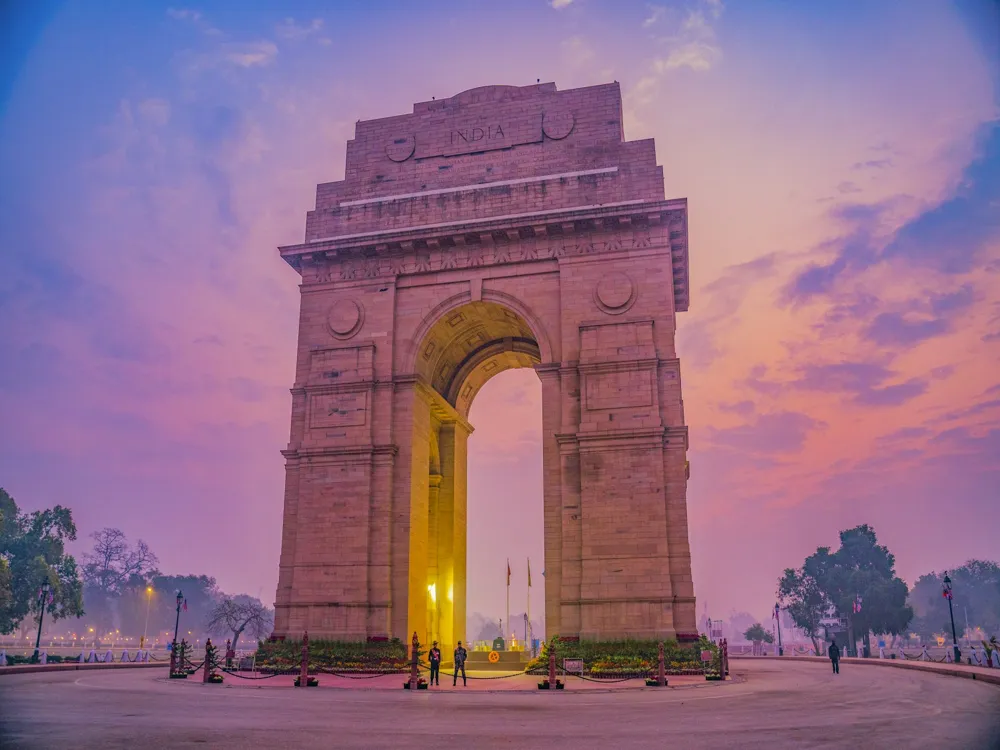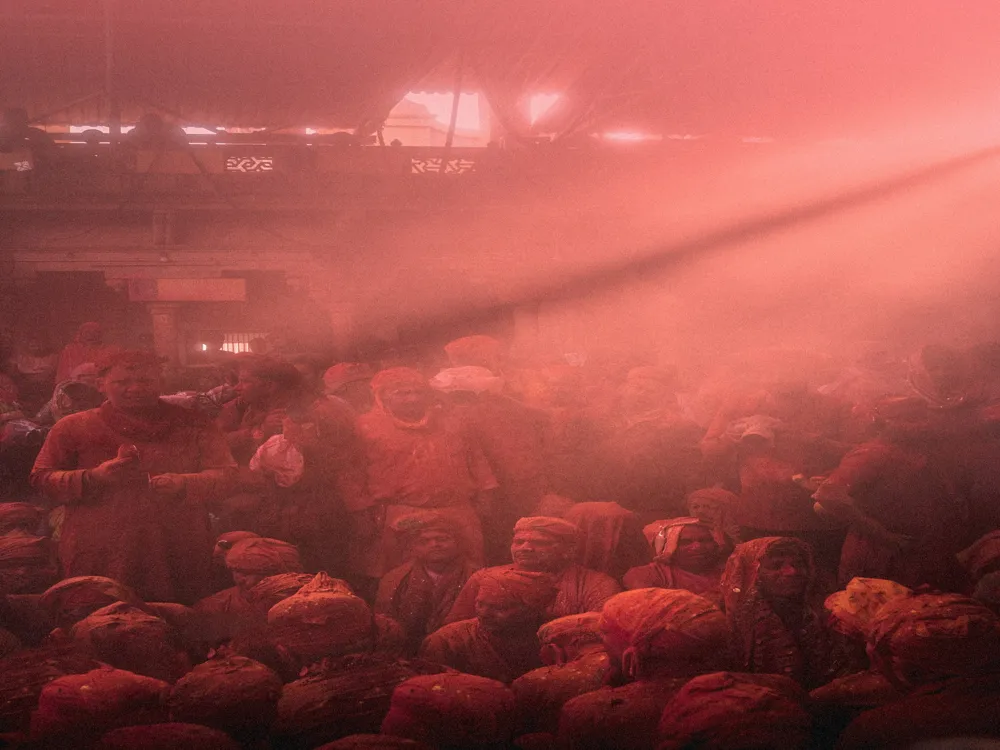Nestled in the heart of Mathura, Uttar Pradesh, the Chamunda Devi Temple is a revered shrine dedicated to Goddess Chamunda, an incarnation of Goddess Durga. This ancient temple, steeped in mythology and history, stands as a testament to the religious fervor and architectural brilliance of ancient India. Mathura, known as the birthplace of Lord Krishna, is not just a pivot for Vaishnavites but also a significant hub for Shakti worship, with Chamunda Devi Temple being a prime example. The temple's lore is intertwined with Hindu mythology. According to legends, Goddess Chamunda emerged from the forehead of Goddess Durga to slay demons Chanda and Munda. This act of valor not only gave her the name Chamunda but also a special place in the Hindu pantheon. The temple at Mathura is believed to be one of the Shaktipeeths, making it a significant pilgrimage site for devotees. The temple, through ages, has attracted pilgrims from all over the country, who come to seek blessings and experience the divine energy of the place. The Chamunda Devi Temple is not just a spiritual haven but also a repository of culture and tradition. Throughout the year, the temple hosts various festivals and rituals, with Navratri being the most prominent. During Navratri, the temple premises come alive with vibrant festivities, rituals, and a sea of devotees. The temple serves as a focal point for religious discourses, cultural activities, and community services, thereby playing a pivotal role in the social and cultural fabric of Mathura. Visiting the Chamunda Devi Temple is a journey into the heart of spiritual India. The temple offers a unique blend of divinity, culture, and history, making it a must-visit destination for anyone looking to explore the rich tapestry of Indian religious practices and beliefs. The Chamunda Devi Temple is an architectural marvel, showcasing the grandeur of ancient Indian temple architecture. The temple, though ancient, has undergone several renovations and expansions over the centuries, each adding a layer of complexity and beauty to its structure. The temple's architecture is a harmonious blend of various styles, reflecting the cultural and historical influences of different eras. The main shrine of the temple is an embodiment of traditional Hindu temple architecture. It features a 'Shikhara' or spire, which is intricately carved and adorned with figurines of deities and mythological motifs. The Shikhara rises majestically against the backdrop of Mathura's skyline, symbolizing the ascent to the divine. The temple's sanctum sanctorum houses the idol of Goddess Chamunda, which is an exquisite example of ancient stone carving and artistry. Surrounding the main shrine are several smaller shrines and structures, each with its unique architectural elements. The temple complex also includes a 'Yajna Shala' or a hall for conducting ritualistic fire sacrifices, which is an integral part of Hindu worship. The intricate carvings on the temple walls and pillars depict various episodes from Hindu mythology, particularly those related to Goddess Durga and Lord Shiva. The temple's design is not just aesthetically pleasing but also serves a functional purpose. The layout of the temple complex is such that it facilitates the smooth flow of pilgrims, especially during festivals and special occasions. The use of locally sourced materials in the construction of the temple reflects the sustainable architectural practices of ancient India. In conclusion, the architecture of Chamunda Devi Temple is a brilliant fusion of artistic excellence, spiritual symbolism, and functional design. It stands as a proud reminder of India's rich architectural heritage and continues to inspire awe and reverence among visitors and devotees alike. As a place of worship, it's important to dress modestly. Traditional Indian attire is recommended. Avoid shorts, sleeveless tops, and revealing clothes. Remove your shoes before entering the temple premises. It's also respectful to maintain silence and not disturb other devotees. Visiting during festivals like Navratri can be a unique experience. However, be prepared for larger crowds and plan your visit accordingly. Avoid photography inside the main shrine as it may be prohibited. Always ask for permission before taking pictures in other areas of the temple. Carry water, especially during hot weather. Be mindful of your belongings as the temple can get crowded. Plan your travel and accommodation, especially during peak seasons and festivals, as Mathura can get quite crowded. Chamunda Devi Temple, located in Mathura, Uttar Pradesh, is easily accessible by various means of transportation. For those traveling by air, the nearest airport is in Agra, which is approximately 60 kilometers away. From Agra, one can hire a taxi or take a bus to Mathura. For train travelers, Mathura Junction is well-connected to major cities across India, and from the station, the temple is just a short ride away by local transport. For visitors preferring to drive, Mathura is well-connected by road with major cities like Delhi, Agra, and Jaipur. Once in Mathura, local transportation options like auto-rickshaws and taxis are readily available to reach the temple. Read More:Overview of Chamunda Devi Temple, Mathura
Architecture of Chamunda Devi Temple
Tips When Visiting Chamunda Devi Temple
Dress Appropriately
Be Mindful of Temple Etiquette
Check for Festival Timings
Respect the Sanctity of the Shrine
Health and Safety Precautions
Travel and Accommodation
How To Reach Chamunda Devi Temple
Chamunda Devi Temple
Mathura
Uttar Pradesh
₹ 8,999 onwards
View mathura Packages
Weather :
Tags : Temple
Time Required : 1 - 2 hrs
Timings :
Summer Timings
5:00 AM to 12:00 PM
1:00 PM to 10:00 PM
Winter Timings
6:00 AM to 12:00 PM
1:00 PM to 9:00 PM
Planning a Trip? Ask Your Question
Mathura Travel Packages
View All Packages For Mathura
Top Hotel Collections for Mathura

Private Pool

Luxury Hotels

5-Star Hotels

Pet Friendly
Top Hotels Near Mathura
Other Top Ranking Places In Mathura
View All Places To Visit In mathura
View mathura Packages
Weather :
Tags : Temple
Time Required : 1 - 2 hrs
Timings :
Summer Timings
5:00 AM to 12:00 PM
1:00 PM to 10:00 PM
Winter Timings
6:00 AM to 12:00 PM
1:00 PM to 9:00 PM
Planning a Trip? Ask Your Question
Mathura Travel Packages
View All Packages For Mathura
Top Hotel Collections for Mathura

Private Pool

Luxury Hotels

5-Star Hotels

Pet Friendly


